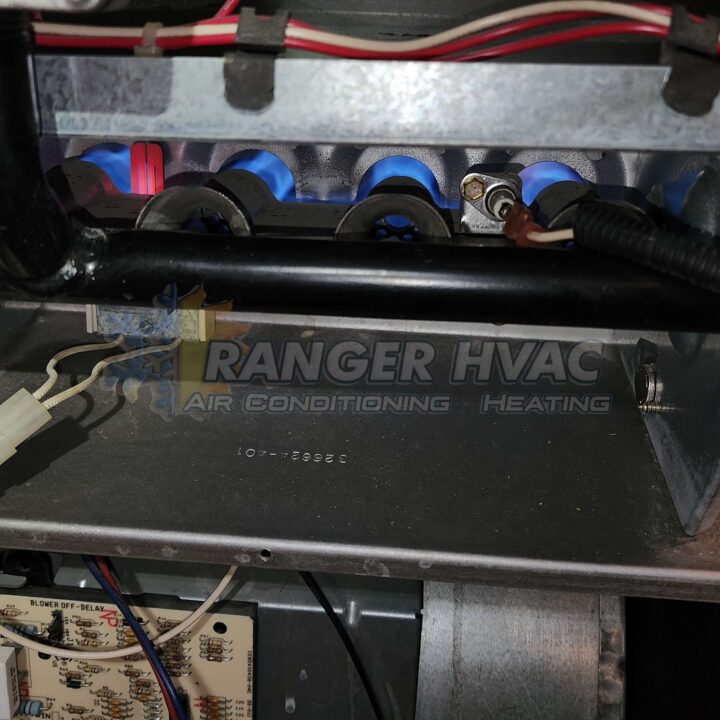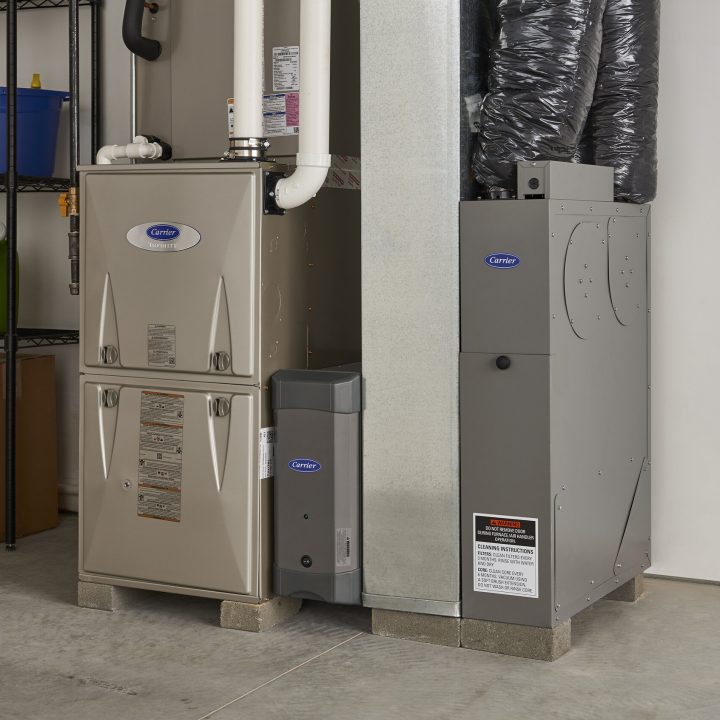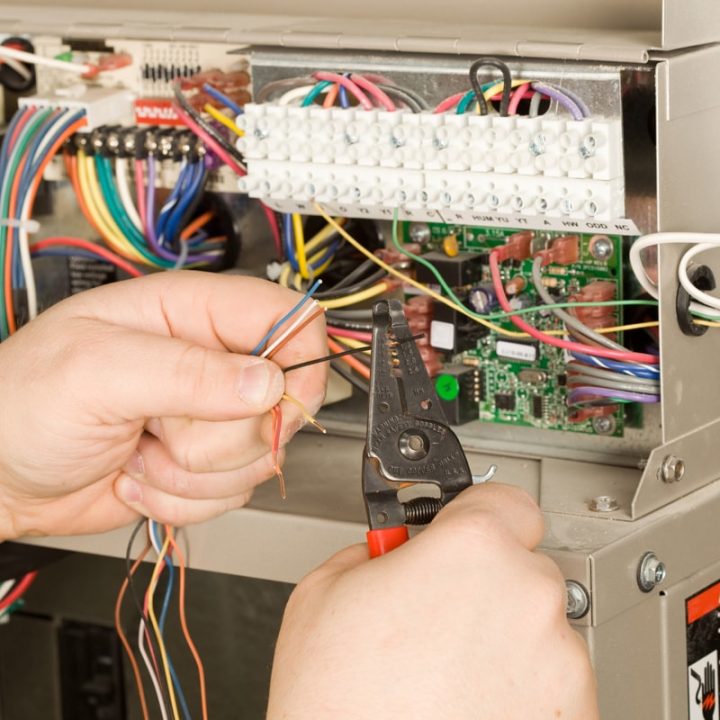Furnace Installation
Experience a seamless and hassle-free furnace installation with Ranger HVAC's expert technicians, ensuring optimal performance and warmth for your home or business.
Essential Steps for a Successful Furnace Installation
Introduction
Installing a furnace is a big investment for homeowners. A proper installation is crucial for comfort and energy efficiency. In this article, we will discuss the steps for a successful installation, types of furnaces, and how to choose the best one for your needs.
Step 1: Choose the Right Furnace
Choose the right furnace type for your home based on factors like energy efficiency, cost, and fuel availability. Consider the furnace size for optimal efficiency.
Gas Furnaces
Gas furnaces are the most common type of furnace used in homes. They are known for their high energy efficiency and cost-effectiveness. However, they require a gas line to be installed, which can be an additional cost. Gas furnaces also require regular maintenance to ensure safe and efficient operation. Despite these requirements, many homeowners prefer gas furnaces due to their ability to heat the home quickly and evenly. They also tend to have a longer lifespan compared to other types of furnaces, making them a good long-term investment.
Electric Furnaces
Electric furnaces are another popular option for homeowners. They are relatively easy to install and do not require a gas line. However, they can be more expensive to operate, especially in areas with high electricity rates. Electric furnaces also have a shorter lifespan compared to gas furnaces. On the other hand, electric furnaces are known for their quiet operation and can be a good option for homes where noise is a concern. They also don’t produce any emissions, making them a more environmentally friendly option compared to gas and oil furnaces.
Oil Furnaces
Oil furnaces are less common but are still used in some homes. They are known for their high heat output and can be a good option for homes in colder climates. However, they require a storage tank for the oil, which can take up space and require regular refilling. Oil furnaces also require more maintenance compared to gas or electric furnaces. Despite these drawbacks, oil furnaces can be a good option for homes that don’t have access to natural gas or where electricity is expensive. They also tend to produce a very comfortable and even heat.
Step 2: Hire a Professional
Furnace Installation is not a DIY project. It requires specialized knowledge and skills to ensure that the furnace is installed correctly and safely. Therefore, it is crucial to hire a professional HVAC contractor for the installation. They will have the necessary expertise and equipment to handle the installation process efficiently. A professional contractor will also be able to advise you on the best type of furnace for your home, based on your specific needs and circumstances.
When choosing a contractor, make sure to do your research and read reviews from previous customers. It is also essential to ask for proof of insurance and licenses to ensure that the contractor is qualified and reputable. Don’t hesitate to ask questions and clarify any doubts you may have. A good contractor will be more than willing to answer your questions and provide you with all the information you need.
Step 3: Prepare the Installation Area
Before the installation process begins, it is essential to prepare the area where the furnace will be installed. This includes clearing any clutter or obstacles that may hinder the installation process. It is also crucial to ensure that the area is well-ventilated and has enough space for the furnace and its components. This preparation will make the installation process smoother and faster, and it will also help to prevent any potential issues during the installation.
In addition to clearing the area, it’s also a good idea to check the condition of your home’s ductwork. If the ductwork is old or damaged, it may need to be repaired or replaced before the new furnace is installed. This will ensure that your new furnace can operate efficiently and provide optimal heating for your home.
Step 4: Remove the Old Furnace
If you are replacing an old furnace, it is crucial to remove it before the new installation. This step should only be done by a professional to ensure that the old furnace is safely disconnected and removed. It is also an opportunity to inspect the old furnace for any potential issues that may have caused its failure. Understanding why your old furnace failed can help you avoid similar issues with your new furnace.
In addition to removing the old furnace, the contractor will also need to dispose of it properly. Old furnaces can contain hazardous materials that need to be handled and disposed of in accordance with local regulations. A professional contractor will know how to do this safely and responsibly.
Step 5: Install the New Furnace
Once the old furnace is removed, the installation process can begin. The contractor will start by installing the furnace in the designated area and connecting it to the ductwork. They will also install the necessary electrical and gas connections, depending on the type of furnace. This step requires precision and expertise, as any mistakes during the installation can lead to inefficiency, safety issues, and potential damage to the furnace.
After the furnace is installed, the contractor will also need to install any additional components, such as a thermostat or air filter. These components are crucial for the operation and efficiency of the furnace, and they need to be installed correctly to ensure that the furnace can function optimally.
Step 6: Test and Adjust
After the installation is complete, the contractor will test the furnace to ensure that it is functioning correctly. They will also make any necessary adjustments to ensure that the furnace is running efficiently and safely. This step is crucial to avoid any potential problems in the future. It’s also an opportunity to learn how to operate the furnace and understand its different settings and features.
In addition to testing the furnace, the contractor will also check the ductwork and ventilation to ensure that they are working properly. They will also check the carbon monoxide levels in your home to ensure that the furnace is venting properly and not posing a risk to your health.
Step 7: Clean Up and Maintenance
Once the furnace is installed and tested, the contractor will clean up the installation area and dispose of any old materials. They will also provide you with maintenance tips and schedule a follow-up visit to ensure that the furnace is running smoothly. Regular maintenance is crucial for the longevity and efficiency of your furnace. It can help to prevent potential issues and ensure that your furnace is always running at its best.
In addition to regular professional maintenance, there are also some simple maintenance tasks that you can do yourself, such as changing the air filter regularly and keeping the area around the furnace clean and free of clutter. These simple tasks can go a long way in keeping your furnace in good condition and ensuring its longevity.
Conclusion
A successful furnace installation process requires careful planning, professional expertise, and proper maintenance. By following these essential steps, you can ensure that your furnace is installed correctly and will provide you with reliable heating for years to come. Remember to choose the right furnace for your home, hire a professional contractor, and properly prepare the installation area for a stress-free and successful installation process. With the right planning and preparation, your new furnace can be a valuable addition to your home, providing you with comfort and efficiency for many years.
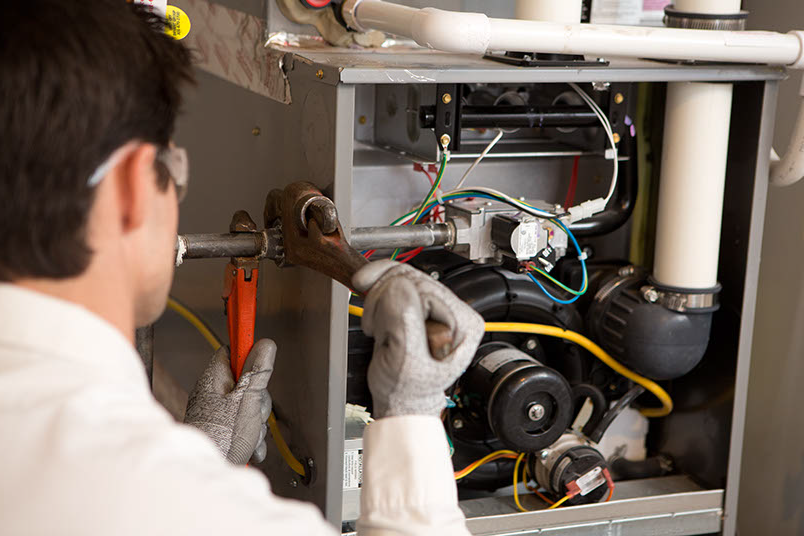
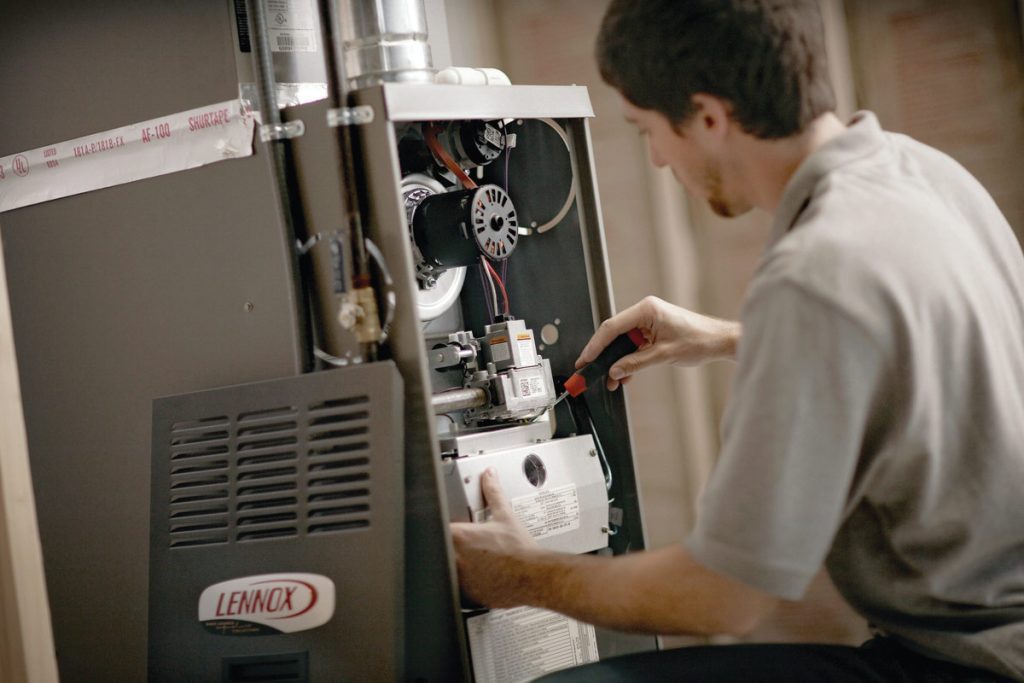
Contact form
"Take Action Today and Schedule Your Service with Us!"
DON’T JUST TAKE OUR WORD FOR IT
 Rudi Chi2023-01-06Our experience with Ranger HVAC was great. Our ground level HVAC system crashed after 20 years in the middle of a heatwave, in 2022. We called and scheduled a appointment for an estimate on a new system, Mike came out and explained all our options and helped us to pick the best system for us and our home. He was very professional and thorough. The whole experience was great and we would recommend Ranger HVAC to our friends and family. The workers that came out and installed the system were extremely nice and cleaned up after they were finished and were very informative about the whole new world of smart HVAC systems. The office support kept us informed of all the visits and invoices were completed electronically. Update We were so satisfied with Ranger's customer service that, four months later, when our 2nd HVAC system in the attic crashed on the new year's eve, after 20 years, we called Mike to install a new one. We couldn't be more happy with the results. Jennifer and Rudy
Rudi Chi2023-01-06Our experience with Ranger HVAC was great. Our ground level HVAC system crashed after 20 years in the middle of a heatwave, in 2022. We called and scheduled a appointment for an estimate on a new system, Mike came out and explained all our options and helped us to pick the best system for us and our home. He was very professional and thorough. The whole experience was great and we would recommend Ranger HVAC to our friends and family. The workers that came out and installed the system were extremely nice and cleaned up after they were finished and were very informative about the whole new world of smart HVAC systems. The office support kept us informed of all the visits and invoices were completed electronically. Update We were so satisfied with Ranger's customer service that, four months later, when our 2nd HVAC system in the attic crashed on the new year's eve, after 20 years, we called Mike to install a new one. We couldn't be more happy with the results. Jennifer and Rudy Kennedy Agyeman2022-11-16My heating system stopped working and a good friend of mine advised to me reach out to Ranger HVAC. The company representative responded in a timely manner and the diagnostic indicated issue with my blower motor, which required replacement. Ranger HVAC team brought in a new motor and replaced it at precise scheduled time with no delay.
Kennedy Agyeman2022-11-16My heating system stopped working and a good friend of mine advised to me reach out to Ranger HVAC. The company representative responded in a timely manner and the diagnostic indicated issue with my blower motor, which required replacement. Ranger HVAC team brought in a new motor and replaced it at precise scheduled time with no delay. Yolene Henry2022-10-26Ranger HVAC installed a new HVAC system at my house yesterday. The company did an excellent job communicating with me from the time I requested a free estimate to the morning they arrived on site. They were careful to cover all the traffic areas and wore shoe covers. A team of three, including Michael the leader, completed the install to my satisfaction. They were patient to answer all my questions. I selected Ranger HVAC based on their knowledge, fair price, and honesty. Michael, who gave me the estimate, spoke from experience, having been himself an HVAC technician. The company didn't try to sell me what I didn't need. I felt that the information I received could be trusted. And indeed they delivered as promised! I am very pleased with the install and I highly recommend this company. Thank you Ranger HVAC for a job well done!
Yolene Henry2022-10-26Ranger HVAC installed a new HVAC system at my house yesterday. The company did an excellent job communicating with me from the time I requested a free estimate to the morning they arrived on site. They were careful to cover all the traffic areas and wore shoe covers. A team of three, including Michael the leader, completed the install to my satisfaction. They were patient to answer all my questions. I selected Ranger HVAC based on their knowledge, fair price, and honesty. Michael, who gave me the estimate, spoke from experience, having been himself an HVAC technician. The company didn't try to sell me what I didn't need. I felt that the information I received could be trusted. And indeed they delivered as promised! I am very pleased with the install and I highly recommend this company. Thank you Ranger HVAC for a job well done! Jill Perrott2022-10-15I had my HVAC ducts cleaned by Ranger HVAC this past week and was so impressed by their work. I saw what a comprehensive process it is and I’m very pleased with the result. Staff always cover their feet when in your home and are very careful when removing and replacing the vent covers and moving their ladders and equipment around. Very fair price as well. Thanks to Sean, Kofi, and Paul for a thorough job well done. I have already recommended Ranger to a couple of friends and will be contacting Ranger for any future HVAC issues.
Jill Perrott2022-10-15I had my HVAC ducts cleaned by Ranger HVAC this past week and was so impressed by their work. I saw what a comprehensive process it is and I’m very pleased with the result. Staff always cover their feet when in your home and are very careful when removing and replacing the vent covers and moving their ladders and equipment around. Very fair price as well. Thanks to Sean, Kofi, and Paul for a thorough job well done. I have already recommended Ranger to a couple of friends and will be contacting Ranger for any future HVAC issues. James Thomas2022-10-10I placed a phone call inquiring about VA HVAC licensing and the woman that I spoke with helped me figure out what to do. Very professional and pleasant to talk with!!!!
James Thomas2022-10-10I placed a phone call inquiring about VA HVAC licensing and the woman that I spoke with helped me figure out what to do. Very professional and pleasant to talk with!!!! Poya Sharifaie2022-08-19They came out and fixed the issue within 2 hours. Last company had us waiting for a month and half. I would use Ranger HVAC anytime.
Poya Sharifaie2022-08-19They came out and fixed the issue within 2 hours. Last company had us waiting for a month and half. I would use Ranger HVAC anytime. Tatiana Melgarejo2022-08-12excellent service. very punctual .. friendly 😊
Tatiana Melgarejo2022-08-12excellent service. very punctual .. friendly 😊 jou b2022-08-12The techs Shawn and Colby were great!! Showed up on time and was able to quickly resolve the issue with my ac. Really happy to find this company
jou b2022-08-12The techs Shawn and Colby were great!! Showed up on time and was able to quickly resolve the issue with my ac. Really happy to find this company gyan manu2022-07-17Ranger HVAV responded to our needs and executed the job in the most professional way! Exceeded our expectations.
gyan manu2022-07-17Ranger HVAV responded to our needs and executed the job in the most professional way! Exceeded our expectations.
Definitely a very good experience. If you're interested, the service is exactly what he says it is; he clearly explains everything he does and you can tell he's being sincere. He isn't pressuring you or trying to upsell you. Just an honest, high-caliber effort. Highly advised.
Customer
He did a fantastic job cleaning and inspecting my commercial AC unit. He made suggestions that I was completely unaware of regarding how to improve circulation and air flow as well as how to minimise my use of electricity during the summer. Excellent rates and service. Once more, many thanks!
Google Review
He is the top in his field! Without having to be at 69 degrees, the AC functions better than before. Additionally, because the heater is so hot, we don't need to turn it up all the way, which saves us money.
Customer
The crew was excellent, and I'm glad I found them since they are nice, down-to-earth people who didn't try to upsell me on items I didn't need instead of telling me about innovations that would make life better for my allergic relatives. All Degree Comfort comes highly recommended.
Customer
Acheivements





